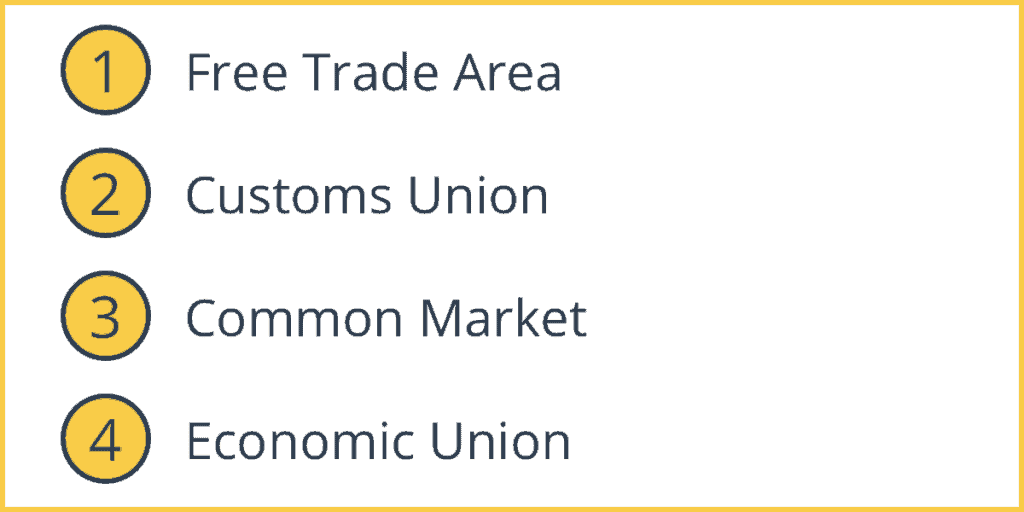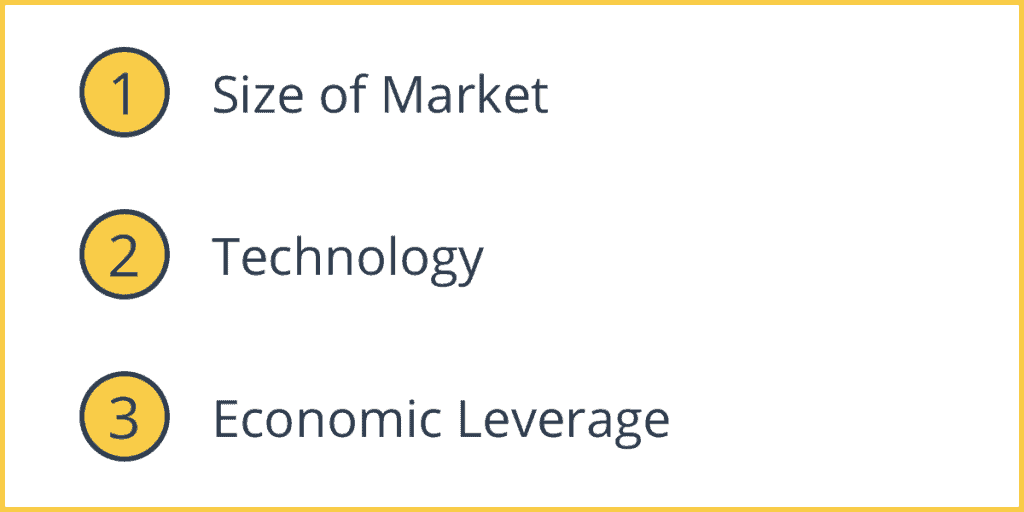A trading bloc is a formal agreement between two or more regional countries that remove trade barriers between the countries in the agreement while keeping trade barriers for other countries.
Types of Trading Blocs

1. Free Trade Area
Two or more countries form a Free Trade Area in which trade barriers between the countries are abolished but each country maintains its own tariffs against non-member countries. For example, the North American Free Trade Agreement (NAFTA) between the USA, Canada & Mexico created a free trade area.
2. Customs Union
A Customs Union is like a free trade area except that member countries maintain a common tariff against non-member countries.
3. Common Market
A Common Market is like a customs union but there is a free flow of factors of productions between the countries. For example, no permits are required to work in another member country.
4. Economic Union
An Economic Union has the same benefits as a common market but there is a common tax system and employs the same currency. For example, the European Union is an economic union.
Trading Blocs Examples
– North American Free Trade Agreement (NAFTA)
– European Economic Area (EEA)
– Union of South American Nations (Unasur/Unasul)
1. Trade Creation
Eliminations of trade barriers for member countries increase domestic production and consumption. The more efficient producer produces, leading to less wastage of scarce resources. This is trade creation.
2. Trade Diversion
When a trade bloc is formed, an external tariff maybe be applied to non-member countries, making some goods that were initially cheaper, now more expensive. Thus, the member country may start importing from other member countries since the price becomes artificially cheaper than buying from the previous non-member country. This leads to trade diversion.
Advantages of Trading Blocs

1. Size of Market
An increase in foreign direct investment results from trade blocs and benefits the economies of participating nations. It increases local investments since the trading bloc increases the overall size of markets for firms.
2. Technology
Open trade leads to faster transfer of technology across borders.
3. Economic Leverage
Increases economic leverage for the trading bloc as a whole. The larger markets created via trading blocs permit economies of scale. The average cost of production is decreased because mass production is allowed.
Disadvantages of Trading Blocs
1. Loss of Sovereignty
A trading bloc is likely to lead to at least partial loss of sovereignty for its participants. For example, the European Union now not only deals not only with trade partnerships, but also with human rights, consumer protection and greenhouse gas emissions.
2. Interdependence
Because trading blocs increase trade among participating countries, the countries become increasingly dependent on each other.

